Flat tires can be dangerous for various reasons. It can make you late for an important meeting, leave you stranded in a bad part of town, or cause a wreck while you are on the highway. While some problems can be put off until the next payday, like changing the oil, a low tire needs to be addressed as soon as you realize there is a problem. NAPA is very familiar with tire problems and has some tips for figuring out where the leak is coming from and how to repair it on your own or have it replaced.
If your tire looks like it’s low, start by adding air to it. Filling a tire with air while it’s hot can give you an inaccurate reading, so make sure the tire is cold first. Also, make sure you don’t add too much air. Your owner’s manual will give you the pounds-per-square-inch (PSI) you need for your tires. A tire gauge will tell you if you need to add more air or not. Check each tire to make sure it is filled sufficiently with air.
Newer cars will alert you to low tire pressure by using a Tire Pressure Monitoring System, but older models aren’t equipped with this feature.
Once all your tires are filled with air, keep an eye on them for the next few weeks. If it’s a small leak, it won’t be obvious right away. The tire will slowly deflate and will become more noticeable because it’s losing air quicker than your other tires.
Weather will affect this as well. AccuWeather reports, “Hot weather may make your tires over-inflate. However, very cold weather may cause your tires to be dangerously under-inflated.” If you have extreme winters that may cause your tire to deflate, there are other ways you can check for leaks.
Also, check for more obvious signs like a protruding nail, tears, or punctures. For less obvious holes, you may hear a slight whistling sound as air is released from the hole. You may also be able to feel it.
If the sidewall or shoulder have been punctured, you’ll need to replace the tire. Otherwise, you can remove the nail and fill in any holes. Just keep in mind that this is a temporary fix and that you should keep an eye on it.
Otherwise, you can remove the nail and fill in any holes. Just keep in mind that this is a temporary fix and that you should keep an eye on it.
If you can’t see or hear the leak, the next step is to break out the water. Grab a bucket, fill it with a little water, and add a dash of soap. Next you’ll cover the low tire with the soap and water. Just like when your kids blow bubbles by blowing, the air leaking out will cause the soap and water to bubble. If you still can’t find the leak, try removing the tire and submerging it completely. If there is a leak present, the pressure from the air leaking out will cause it to bubble.
If you still can’t find the leak, try removing the tire and submerging it completely. If there is a leak present, the pressure from the air leaking out will cause it to bubble.
View this post on Instagram
Oh yes!!! It is so important to check ☑ your tires for wears and damage. Safety never stops. #tires #Tiresales #izuanstyres #portHarcourt #nigeria #tireshop #value Photo credit : #treadwisely1
A post shared by Izuans Tyres limited (@izuans_tyres) on
The tire itself can be in great shape, but still leak due to a bad valve stem or a damaged wheel-mounting surface. Submerging the tire in water will still show you where the leak is, even if it isn’t the tire.
Now that you’ve figured out where the leak is, it’s time to decide if you can fix it by filling in the hole or if you need to replace the tire. Sometimes the tire can be fixed, but in many cases it needs to be replaced. Some factors you need to consider are what the weather is like where you live, road conditions, and how far you travel each month. If you’re going to get a lot of wear and tear on your tires, it may be better to invest in new high-quality tires. If your budget is a concern, try repairing the tire yourself with a tube sealant kit and setting aside some cash for tires at a later date.
If you’re going to get a lot of wear and tear on your tires, it may be better to invest in new high-quality tires. If your budget is a concern, try repairing the tire yourself with a tube sealant kit and setting aside some cash for tires at a later date.
If it’s something more than the tire, then you may need to consult a professional for advice. Either way, making sure your tires are in proper working condition will keep you and your fellow drivers safe as you travel down the road of life.
While making the usual provisions and getting protected with car insurance are important, knowing how to find the exact source of the leak is a vital skill.
Tires are inherently designed to take a lot of abuse. After all, even the best-maintained highway will have potentially sharp debris around. As a driver, it's likely that you'll have to deal with a punctured tire at one point or another.
So, here's how to find a slow leak, with a little help from car insurance comparison and broker app Jerry.
RECOMMENDED
No spam or unwanted phone calls · No long forms · No fees, ever
ZIP Code
ZIP Code
Find insurance savings (100% Free)
Check your tire pressure regularly, at least once per month. A gauge pen is remarkably quick and easy to use, and checking all four tires should never take more than five minutes at a time.
Giving your tires a regular visual inspection is worthwhile as well. You never know if there are any shards embedded in a tire, and it's far safer to deal with when the car is parked as opposed to risking the tire blowing while out on the road.
Do this on a monthly basis; it barely takes any time and could nip a problem at the root before it's allowed to grow.
It should be noted that tires will naturally lose their pressure over time, punctures or not.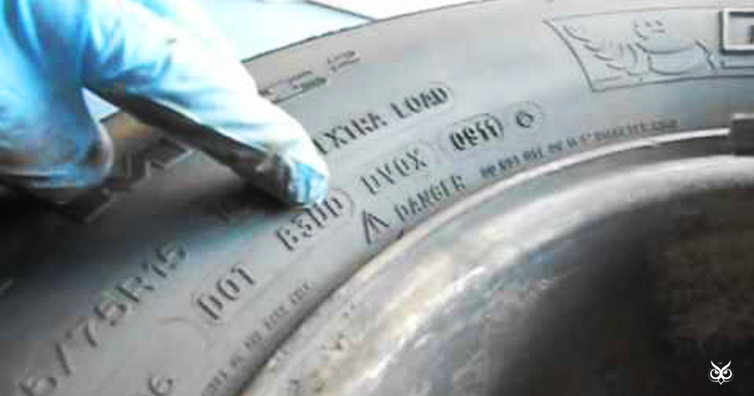 This is especially true during the colder months when air contracts. If you are regularly gauging the pressure, you should pump up the tires whenever they drop below the recommended threshold.
This is especially true during the colder months when air contracts. If you are regularly gauging the pressure, you should pump up the tires whenever they drop below the recommended threshold.
It's important to keep tire sealant, a gauge pen, and an air pump in the vehicle with you. They may be easy to overlook before problems occur, but you'll miss them dearly if they're ever needed.
MORE: How to fix a flat
First off, you should check to see that the pressure valves have been shut tightly enough. Air may be escaping because the valve wasn't put back on tightly enough after the last time the pressure was checked. If you are still sure there's a leak, you should pump up the tire again.
Having a full set of air to work with will make it considerably easier to spot the leak.
Tire leaks fortunately give off several signs that reveal their whereabouts. The distinctive hissing whistle of leaking air is arguably the biggest tell, and you may be able to pinpoint it by ears alone.
Giving the affected tire a visual glance over with a flashlight can help reveal visible damage or objects embedded in the tire. Lastly, by running your hand closely over the tire, you may be able to feel the gentle gust of air on your hand.
MORE: Low tire pressure in cold weather
The "Bubble Test" is a neat trick if the regular cues aren't helping much. Create a solution of water and soap, with enough soap to give the mix a bubbly froth. Apply the soapy mix all over the leaking tire, so that it's covered in soap bubbles. If there is a leak, it should be disturbing the bubbles around it, making the leak far more apparent than it would have been before.
In terms of soaps, using a 20% detergent ratio is recommended for the fact that it is very bubbly. Needless to say, the Bubble Test is suited for a home environment, and may be difficult to pull off in a highway situation.
Once you have properly identified where the source of the tire leakage is, you should make a quick appraisal whether or not it is severe enough to forego self-repair. As a general rule of thumb, a puncture that is any greater than 1/4" across in diameter is probably going to be too much for you to fix yourself on the road.
As a general rule of thumb, a puncture that is any greater than 1/4" across in diameter is probably going to be too much for you to fix yourself on the road.
In the event you have found the leak before it got too big, you can use a tire sealant spray to effectively fill in the puncture. Applying a spray is a temporary solution at best, but you can at least extend the tire's life long enough to attend the matter on your own time within reason. This quick fix is a far cry from needing to change tires or enlist the help of roadside assistance.
In the case that the leak is bigger, roadside assistance can come to repair or replace the tire for you. Although this can be quite costly out of pocket, many insurance policies will include this service. To find the one that will cover roadside assistance the best, try using the Jerry app. A licensed broker, Jerry does all the hard work of finding cheap quotes from the top name-brand insurance companies and buying new car insurance. Jerry will even help you cancel your old policy.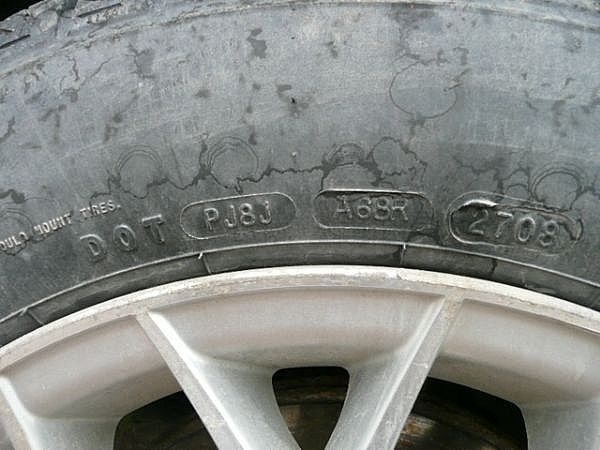
And to ensure you always have the lowest rate, Jerry will send you new quotes every time your policy comes up for renewal, so you’re always getting the coverage you want at the best price.
RECOMMENDED
Judith switched to Progressive
Saved $
725
annually
Alexander switched to Travelers
Saved $
834
annually
Annie switched to Nationwide
Saved $
668
annually
Author: Mikhail Balandin
A few years ago we wrote a short but accurate guide to the causes of antifreeze leaks. If you want to get some initial information about this not very pleasant phenomenon, you can look at this material. Today we will look at the question from a different point of view: how to understand exactly where it goes, and how to easily find the reason for its constantly declining level. The stars have formed so that we begin to monitor the level of antifreeze only when it pours under the car like a waterfall or starts to go into the sky as a ferry from under the hood. Well, or if the motor overheats or the stove stops working. And so, for the sake of interest, before the trip, open the hood and look at the tank - thank you. Too difficult. And, by the way, in vain. If you notice in time that there is less antifreeze, you can avoid many problems. Especially if you know where this liquid goes from the reservoir.
If you want to get some initial information about this not very pleasant phenomenon, you can look at this material. Today we will look at the question from a different point of view: how to understand exactly where it goes, and how to easily find the reason for its constantly declining level. The stars have formed so that we begin to monitor the level of antifreeze only when it pours under the car like a waterfall or starts to go into the sky as a ferry from under the hood. Well, or if the motor overheats or the stove stops working. And so, for the sake of interest, before the trip, open the hood and look at the tank - thank you. Too difficult. And, by the way, in vain. If you notice in time that there is less antifreeze, you can avoid many problems. Especially if you know where this liquid goes from the reservoir.
Probably, I got a little excited when I reproached some car owners for being lazy. There are tanks in which absolutely nothing is visible. For example, on Solaris.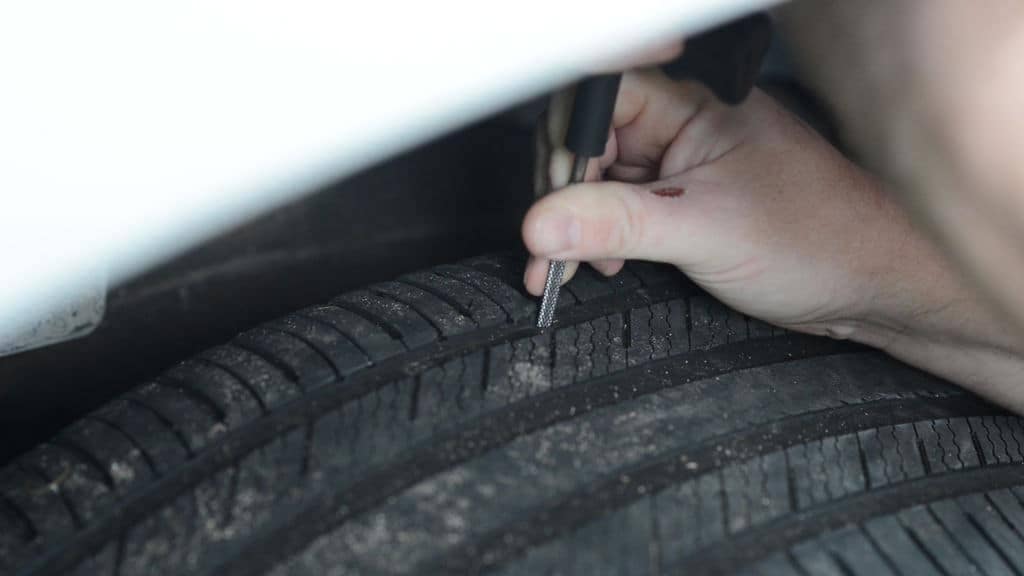 But this does not change the essence of the matter: you still need to monitor the level of antifreeze.
But this does not change the essence of the matter: you still need to monitor the level of antifreeze.
To begin with, let's solve an important question: what is considered a dangerous decrease in the level of antifreeze? Let me clarify the wording: does the level of antifreeze itself have the right to decrease slightly? Or should any consumption of this liquid be equated to a disaster in the cooling system?
The question is not at all idle. On the Internet, some authors and commentators in heated debates throw bursting cooling system tanks and splash boiling antifreeze at each other in an attempt to prove their case. Some of them are convinced that since the system is sealed, then any consumption of antifreeze indicates a breakdown. Others are sure that antifreeze is a solution of ethylene glycol (sometimes propylene glycol) and water, and therefore its evaporation is a normal process. To the sarcastic questions of the category “Well, where does the water evaporate from the sealed system?” usually keep silent or throw another tank at the opponent. In general, both are right.
In general, both are right.
The cooling system is really tight. But not really. It is not made for a spacecraft, and the fact that theoretically it should easily withstand a pressure of two (or even a little more) atmospheres does not make it so tight that the antifreeze water does not evaporate at all. And if in a couple of years you have to add 200-300 grams, this is normal. But if each MOT level goes to the same 200 g, this is already a reason to look for where this antifreeze found its way to freedom. Okay, if it flows outward ...
Sadly, antifreeze can leak anywhere. Finding exactly where he does this is often difficult. This is not always clearly visible, so there are several ways to make it easier to find the leak.
Let's start with the fact that antifreeze has a peculiarity: more often it flows on a cold engine. The reason is simple: when heated, materials expand and small leaks cease to pass liquid. This is especially noticeable if the antifreeze escapes through the pump. On a hot engine, you can climb everything, but see nothing. And under a cold car, drops of antifreeze will appear on the pavement. However, on a cold engine, antifreeze leaves not only through the pump. Other parts may be to blame, including clamps on the nozzles. So not everything is so clear.
On a hot engine, you can climb everything, but see nothing. And under a cold car, drops of antifreeze will appear on the pavement. However, on a cold engine, antifreeze leaves not only through the pump. Other parts may be to blame, including clamps on the nozzles. So not everything is so clear.
If antifreeze runs out, you can try to buy a special fluorescent additive. This is the kind of thing that glows great in ultraviolet light. It is added to antifreeze, then all parts of the cooling system are checked with a UV flashlight. The leak will be visible immediately. Just do not forget to read the instructions: often after such a check, the antifreeze must be drained, the system must be flushed and filled with fresh liquid. However, now there are antifreezes that glow in ultraviolet light on their own, without any additives.
The second way to find the leak is to use the increased pressure that is generated by the compressor. This method is usually sought in normal car services. True, in abnormal people they do this once and immediately after the car enters the box, and this is not entirely correct. After the engine cools down, antifreeze can leak where everything was dry on a hot engine, so you need to check on a cold engine too. And some don't want to do that.
True, in abnormal people they do this once and immediately after the car enters the box, and this is not entirely correct. After the engine cools down, antifreeze can leak where everything was dry on a hot engine, so you need to check on a cold engine too. And some don't want to do that.
A separate story is the leakage of antifreeze due to a defective plug of the expansion tank. We talked about how to check it in some detail, so we will not repeat ourselves. But it is necessary to remember it for one simple reason: if a suspiciously large amount flows from all the cracks, then the reason may be precisely in this traffic jam. More precisely, in its valve, which has ceased to bleed excess pressure. So if it “whistles” strongly and at all seams, check the cork, it won’t hurt to do it again. Otherwise, the tank may burst (hello, "ten", Shniva and others like them) or even the radiator. Well, or something else that will not be ready enough for the mockery of too high pressure. And for this reason, there will be a lot of antifreeze to flow out. Here under the car there will be not a puddle, but the whole sea. Especially - immediately after stopping the engine.
Here under the car there will be not a puddle, but the whole sea. Especially - immediately after stopping the engine.
Let's say the level is going down and everything is dry under the car. Where does the antifreeze go?
There are two scenarios. At the first, antifreeze flows into the cabin, at the second - into the engine. Let's start with the first one.
It is impossible not to notice that the antifreeze has flowed into the passenger compartment. He has only one way: through the stove radiator and its pipes, so that everything connected with heating and ventilation of the cabin will scream about an antifreeze leak. The first signs are white steam, which “shoots” from the deflectors at the moment the stove is turned on, and misted windows. Well, a very peculiar sweet smell of antifreeze in the cabin. A less noticeable but most obvious sign is a floor that is wet with antifreeze. Since the stove is inside, there is nowhere for the antifreeze to go, only to flow onto the floor.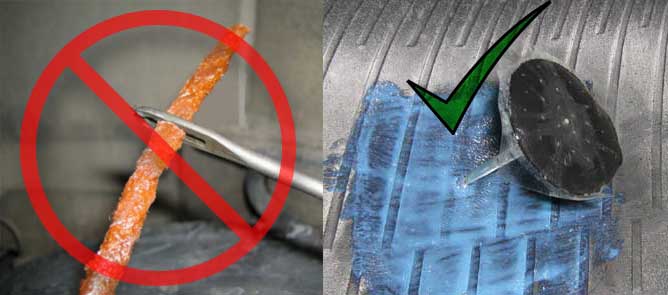 By the way, it is difficult to remove antifreeze from the rug if it is not removed and dried. But most of it can be removed with toilet paper if you put a few rolls upside down on the carpet. If anything, the cheapest one will do. In a word, it is very difficult not to notice a leak through the stove radiator. But further - how lucky. On some machines, the heater core can be replaced by simply lying upside down under the panel, on others you will have to remove the entire panel. But still, this is better than the second option of a latent leak.
By the way, it is difficult to remove antifreeze from the rug if it is not removed and dried. But most of it can be removed with toilet paper if you put a few rolls upside down on the carpet. If anything, the cheapest one will do. In a word, it is very difficult not to notice a leak through the stove radiator. But further - how lucky. On some machines, the heater core can be replaced by simply lying upside down under the panel, on others you will have to remove the entire panel. But still, this is better than the second option of a latent leak.
In this case, the antifreeze goes into the oil. If its level in the tank regularly drops, but it does not flow outside (even into the cabin), you will have to be a little nervous. On very old cars, a typical weak point is the cylinder head gasket. If it burns out, the antifreeze will go into the cylinders and burn there, which will be indicated by white smoke from the exhaust pipe and bubbles in the expansion tank if you press the gas pedal. This is something obvious and familiar to everyone. But now in so many cars there is a heat exchanger (or several, they are different), in which oil and antifreeze flow in close proximity. And here they are the reason for the departure of antifreeze. If the heat exchanger fails, oil and antifreeze mix in it. In this case, oil gets into the antifreeze, and antifreeze gets into the oil. If this happens, nothing good happens.
This is something obvious and familiar to everyone. But now in so many cars there is a heat exchanger (or several, they are different), in which oil and antifreeze flow in close proximity. And here they are the reason for the departure of antifreeze. If the heat exchanger fails, oil and antifreeze mix in it. In this case, oil gets into the antifreeze, and antifreeze gets into the oil. If this happens, nothing good happens.
How do you know if there is a problem with the heat exchanger? First of all, it is necessary to assess the condition of the oil and antifreeze externally. Antifreeze should never contain any deposits. Dirty antifreeze must be changed, but something else is important: if there is a suspicion that oil has appeared in it, urgent measures must be taken.
There is a funny story on the Internet about finding oil in antifreeze. Not quite an experienced car owner suggested that he encountered this disaster on the new Superba. He went to the dealer, but the problem could not be found. However, they took money for the diagnostics: the case is not guaranteed, the client's desire. The worried man went to his friends, where they checked his car again and also found nothing. As a result, it turned out that the car owner simply did not know that the antifreeze itself was oily, but he stuck his finger into the tank and made a conclusion. Why he did it, no one knows. Maybe he was just familiar with the car. In real life, the emulsion in the tank is immediately visible, you don’t need to put your finger in there. Especially on a hot engine.
However, they took money for the diagnostics: the case is not guaranteed, the client's desire. The worried man went to his friends, where they checked his car again and also found nothing. As a result, it turned out that the car owner simply did not know that the antifreeze itself was oily, but he stuck his finger into the tank and made a conclusion. Why he did it, no one knows. Maybe he was just familiar with the car. In real life, the emulsion in the tank is immediately visible, you don’t need to put your finger in there. Especially on a hot engine.
The ingress of antifreeze into the oil is also easy to determine - by emulsion. But you also need to keep in mind that sometimes a light, light coating on the oil filler cap is not an emulsion, but just condensate. And that's okay. Just in case, it is better to pull out the dipstick and look at it. If there is no emulsion, you should not worry.
A very sneaky secret disappearance of antifreeze "to nowhere" is its disappearance into automatic transmission oil. Here, the engineers of many companies (hello, Volvo, Opel, Mitsubishi and some others) have done a little tricky with automatic transmission heat exchangers inside the radiators of the cooling system. When it will leak there, God only knows. Or maybe he doesn't always know. The check methods are exactly the same as in the case of mixing engine oil and antifreeze: monitor the purity of the latter and, if possible, the condition of the automatic transmission oil. The second, of course, is more difficult, especially if the box does not have a probe. But killing the machine gun with a cocktail of antifreeze and oil is also not worth it.
Here, the engineers of many companies (hello, Volvo, Opel, Mitsubishi and some others) have done a little tricky with automatic transmission heat exchangers inside the radiators of the cooling system. When it will leak there, God only knows. Or maybe he doesn't always know. The check methods are exactly the same as in the case of mixing engine oil and antifreeze: monitor the purity of the latter and, if possible, the condition of the automatic transmission oil. The second, of course, is more difficult, especially if the box does not have a probe. But killing the machine gun with a cocktail of antifreeze and oil is also not worth it.
Theoretically, getting the antifreeze level to be constant is not that difficult. It is enough just to monitor the cooling system. Change the pump in time (remember the golden rule that works on most cars - every second belt change), the antifreeze itself and monitor the condition of the expansion tank plug. The latter is especially important for new cars. Increased pressure can prematurely disable tired pipes or a radiator, and this is a shame.
Increased pressure can prematurely disable tired pipes or a radiator, and this is a shame.
If you can’t find a leak on your own, you shouldn’t pour all sorts of miracle liquids from the category of “stop leaks” into the system or pour mustard or tobacco into it. Yes, sometimes it can help, but the probability of finishing off everything that is still alive is much higher. It is better to repair what is already dead. And if you smell antifreeze in the cabin, you need to fix the problem immediately: antifreeze vapor is a rather poisonous thing and can harm your health.
Poll
Have you ever run out of antifreeze?
Your vote
Total votes:
practice
Articles / Popular questions Changes to the traffic rules for electric scooters of October 6, 2022: what has changed and when does it come into force Recently, we talked about what requirements are in the current traffic rules for those who ride electric scooters, and noted the imperfection of the legislation. After all, the drivers of most powerful e... 382 one one 10/12/2022
After all, the drivers of most powerful e... 382 one one 10/12/2022
Articles / Used cars 5 reasons to buy and not to buy Toyota Fortuner II “Impeccable car”, “phenomenal cross-country ability”, “shaky suspension, hard steering, the engine inside bellows like a buffalo”, “huge miscalculations in terms of comfort”, “comfortable handsome man”, “very ... 3956 2 one 09.10.2022
Articles / Practice Look into the kingpin: what is a kingpin suspension, how to maintain it and why to inject The word "pivot" today seems to someone as archaic as "zipun", "endova" and "batog". In fact, this is not so: the king pins have not left us yet, and it is likely that some will have to ... 1496 7 0 07.10.2022
In fact, this is not so: the king pins have not left us yet, and it is likely that some will have to ... 1496 7 0 07.10.2022
Test drives / Test drive Haval Dargo vs Mitsubishi Outlander: the dog is barking, the stranger is coming In the Haval dealership in the south of Moscow, life is in full swing: buyers look at cars, communicate with managers and sign some papers. While I was waiting for the test Dargo, the same cross... 13136 7 170 13.09.2022
Test drives / Test drive Motor from Mercedes, emblem from Renault, assembly from Dacia: test drive of the European Logan 1. 0 It would seem that what's new can be told about the second generation Renault Logan, known to every Russian taxi driver, as they say, up and down? However, this car has... 11464 ten 41 08/13/2022
0 It would seem that what's new can be told about the second generation Renault Logan, known to every Russian taxi driver, as they say, up and down? However, this car has... 11464 ten 41 08/13/2022
Test drives / Test drive Geely Coolray vs Haval Jolion: Free Cheese? If! Do you want to buy a car today with a full warranty, on credit at an adequate rate, without wild dealer markups? Now this is still a task, because a full-fledged chain of "representation - s... 8395 25 thirty 08/10/2022
Author: Oleg Polazhinets
A sudden puddle or a large spot under the car is a reason to think about what it might be. Indeed, in the units of the car there are a dozen operating fluids that may be outside. And if you are not completely sure that the stain is not left from a car previously parked in the same place, then it is worth classifying the type of liquid by appearance and smell, and also, if possible, identify the source of the leak. Let's figure out how to do this without tasting the puddle.
Engine oil
Oil leakage from the engine lubrication system is a fairly common occurrence, so in many parking lots the asphalt is literally dotted with characteristic oily spots. Recognizing an oil leak is quite simple: a small and thick greasy spot cannot be confused with water and even antifreeze. Under the hood, the problem usually reveals itself either as fresh traces of oil, if the leak is fresh or strong, or, conversely, as dirt growths covered with oil, if the engine has been losing oil for a long time and drop by drop. As a rule, oil flows out of the engine due to leaks in the crankshaft seals, as well as the sump. However, these are only the most common options: you need to inspect the entire engine, and if traces of oil on the crankcase protection are fresh and no leaks are visible, it is better to inspect the car on a lift.
Recognizing an oil leak is quite simple: a small and thick greasy spot cannot be confused with water and even antifreeze. Under the hood, the problem usually reveals itself either as fresh traces of oil, if the leak is fresh or strong, or, conversely, as dirt growths covered with oil, if the engine has been losing oil for a long time and drop by drop. As a rule, oil flows out of the engine due to leaks in the crankshaft seals, as well as the sump. However, these are only the most common options: you need to inspect the entire engine, and if traces of oil on the crankcase protection are fresh and no leaks are visible, it is better to inspect the car on a lift.
If the puddle is large, then you need to carefully inspect the crankcase - it is possible that it was broken on the road. In any case, you need to check the oil level, as well as visually inspect the engine. Driving with a low level on the dipstick is more expensive for yourself, because many engine parts can experience oil starvation.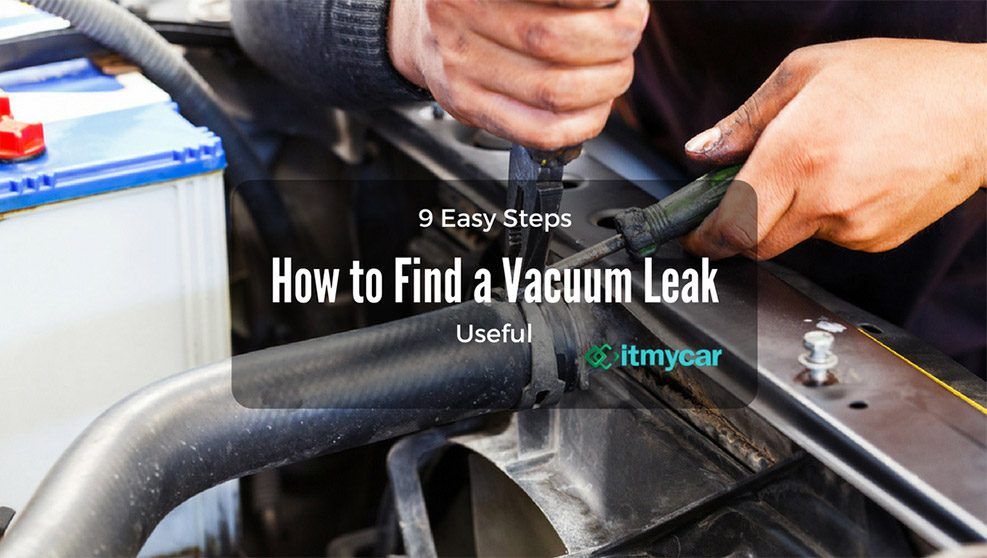
If the emergency pressure lamp is on or even blinking, it’s definitely not worth moving on: low oil pressure means its critically low level, capable of killing the engine in a few kilometers. In such a situation, you need to immediately turn off the car and then transport it on a tow truck. But even in the case when the level is normal, it is not worth delaying the repair, because due to the “hardened” crankshaft oil seals, oil can get on the drive belts or the clutch disc, and this will lead to completely different problems.
Transmission oil
Distinguishing engine oil from transmission oil is not easy, but there are still some features. Gear oil is usually noticeably thicker and remains light even after a long time after replacement, but engine oil darkens over time. Another way to distinguish the type of oil is to drop it into the water: the engine oil will remain there in the form of a droplet-lens, and the transmission will begin to spread. Well, to understand where the oil is flowing from, a careful inspection of the gearbox from below will help. An oily body is a reason to immediately check the oil level if the dipstick is provided structurally.
An oily body is a reason to immediately check the oil level if the dipstick is provided structurally.
And although in Soviet times some lucky people managed to get to the garage practically on a “dry” box, turning on the fourth (direct) gear, modern practice knows many cases when even seemingly unpretentious mechanics fail prematurely due to that the owner drove several thousand with a low oil level, which gears really do not like - especially those that are located above everything in the unit.
For automatic transmissions, the oil level is even more critical, so setting off on a journey with such a leak is literally condemning the machine. It is even easier to determine that it is an automatic transmission that has flowed than in the case of mechanics, by the characteristic color of the oil, which usually ranges from red to burgundy brown.
Obvious oil leaks from the "transfer case", center differential or rear axle gearbox indicate leaks in the seals or damage to the housing. A “dry” gearbox usually quickly starts to hum and howl, and in the worst case scenario, it can jam right on the go.
A “dry” gearbox usually quickly starts to hum and howl, and in the worst case scenario, it can jam right on the go.
Coolant
In a liquid-cooled engine, antifreeze plays an important role and the system itself must remain sealed. However, due to high temperatures, its individual elements may lose their tightness, which is especially true for older cars. We talked in detail about the main causes of antifreeze leakage, and now we will remind you again. Bend your fingers: leaky radiators (main and interior heater), a leaky thermostat (engine or automatic transmission), a burst expansion tank, a malfunctioning expansion tank cap, cracked pipes and hoses, main or additional water pumps, and even the cylinder block itself can be the culprits!
Experienced drivers can recognize antifreeze by tasting a suspicious stain, as ethylene glycol, which is the basis of almost any antifreeze, has a sweet aftertaste. However, we will not advise you to engage in such organoleptics: even though ethylene glycol is a moderately toxic substance, and for poisoning you need to take a couple of sips, but in each case it is not known what other impurities may be present in a stain on asphalt. It is better to try the liquid to the touch: antifreeze is slightly oily. So if the stain is not purely oily, but also has a color (greenish, reddish, yellowish, and so on - there are many dye options) and is greasy to the touch, it is most likely antifreeze.
It is better to try the liquid to the touch: antifreeze is slightly oily. So if the stain is not purely oily, but also has a color (greenish, reddish, yellowish, and so on - there are many dye options) and is greasy to the touch, it is most likely antifreeze.
If the antifreeze leak is strong, then you can get to the house or the place of repair by simply adding water to the system. However, this is a rather risky business, since it will be necessary to constantly monitor the level of antifreeze and the temperature of the coolant in the system. If the coolant level drops below the minimum while the engine is running, the engine may overheat. The probability of “boiling” the engine in the heat and in traffic jams is especially high, so if the leak is strong, and it’s summer outside and there are still a few kilometers ahead, it’s better to immediately call a tow truck.
Brake fluid
The most dangerous leak is the loss of brake fluid. If it is already on the pavement, then this usually means that the car has no brakes in the literal sense, because the volume of the brake system, unlike lubrication or cooling systems, is very small - no more than a liter.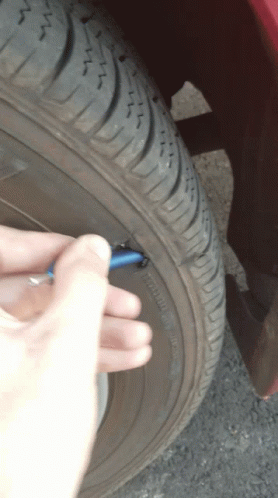 As a rule, even a small leak of brake fluid leads to the failure of one of the circuits or the complete failure of the brake system, because it is immediately aired. It’s bad that it’s not always easy to notice the place of a leak - for example, the rear brake cylinders are inside the drums, and outside they are covered with shields. A sure and bad sign of a brake fluid leak is traces of fluid on the inside of the wheel.
As a rule, even a small leak of brake fluid leads to the failure of one of the circuits or the complete failure of the brake system, because it is immediately aired. It’s bad that it’s not always easy to notice the place of a leak - for example, the rear brake cylinders are inside the drums, and outside they are covered with shields. A sure and bad sign of a brake fluid leak is traces of fluid on the inside of the wheel.
A cracked brake hose or broken brake pipe will have the same effect - the brakes will simply stop working. In Soviet times, in order to get to the garage, failed brakes on individual wheels were turned off in any suitable way, and any liquid was poured into the hydraulic drive, up to water, castor oil or alcohol. However, we categorically do not recommend any of these "folk methods". Firstly, it is deadly: a drop in pressure in the system means it is impossible to slow down. And secondly, the traffic rules forbid to continue driving with a faulty brake system, and any leakage of “brakes” is a clear sign of a malfunction.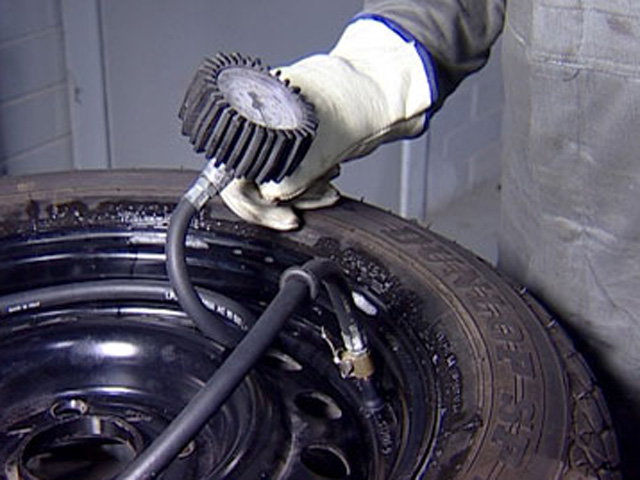
Fuel
It is possible to understand that fuel is leaking from the car by a sharp and characteristic smell - both in the case of gasoline and diesel. There can be several reasons: a rusted or damaged by a foreign object tank, a defect in the metal fuel line, a burst fuel hose, a cracked filter housing, or damage to the filler hose at the filler neck. The result is always the same: fuel flows into the street or, even worse, into the engine.
Loss of tightness in the fuel system can also occur after unskilled repairs - for example, when changing the fuel filter unknowingly on the fuel lines, they simply did not replace the penny sealing rings. It is unnecessary to talk about the high fire hazard of gasoline, so any such leak is a reason to sound the alarm and not only not to continue moving on, but not even to leave the car unattended, because someone may decide to smoke nearby. We will not recommend the “old-fashioned” way to fix a gas tank leak with soap: it was acceptable 40-50 years ago, but now the verdict is clear - only a tow truck.
Power steering
A leaking rail usually leaves marks on neighboring components - subframe, suspension parts, and so on, but reddish fluid from the power steering gets on the asphalt only if the system, as they say, “died”. Leakage can occur not only from the rail itself, but also from hoses and lines, both at the junctions and through cracks in the hoses themselves. Therefore, if there are oil smudges under the machine and a drop in the level in the hydraulic booster engine compartment, you need to inspect all lines for breaks and major damage. Typically, hydraulic boosters use the same red oil as automatic transmissions: this is worth bearing in mind to identify the source of the leak.
It is theoretically possible to drive further with a strong leak and an empty engine compartment tank: even in the absence of oil, the rack retains the ability to turn the wheels. But from the point of view of the law, this cannot be done: traffic rules prohibit the operation of the car in the event of a malfunction of the power steering.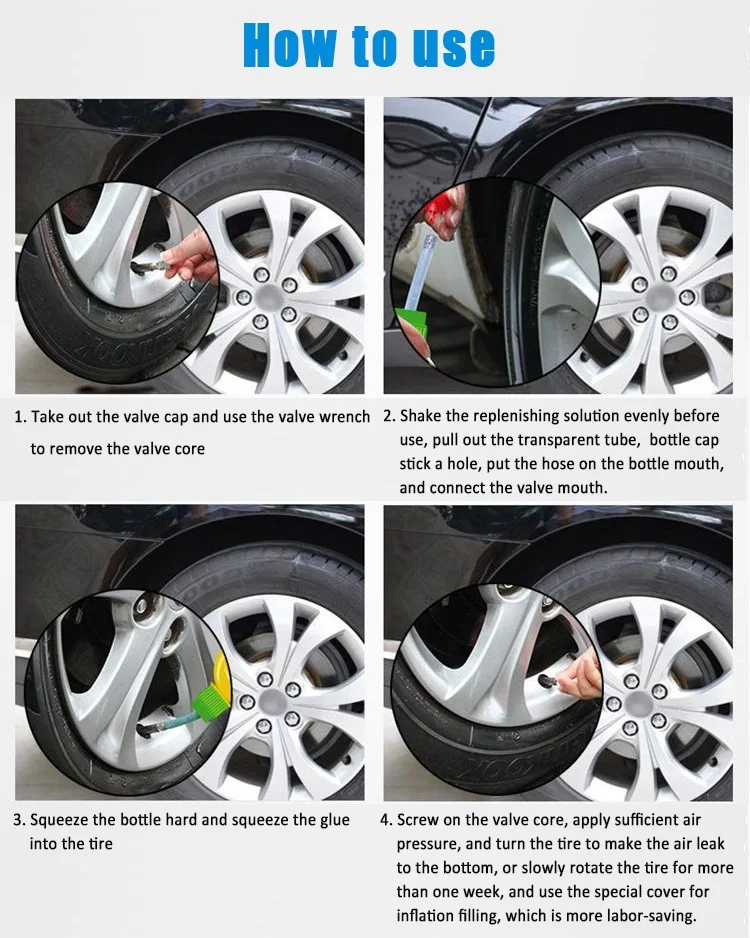 Therefore, it is worth moving without oil in the system only as a last resort and for short distances, and at the same time safety measures must be observed. After all, a non-working power steering means that it will take much more effort to turn the steering wheel - even more than on cars without power. In addition, movement with a lack of oil in the system can provoke further breakdowns: the pump can jam or its drive belt breaks, on which, depending on the design features, other units can be tied. Having noticed a leak from this system, you need to do the same as in the case of the engine and gearbox - check the level and add fluid.
Therefore, it is worth moving without oil in the system only as a last resort and for short distances, and at the same time safety measures must be observed. After all, a non-working power steering means that it will take much more effort to turn the steering wheel - even more than on cars without power. In addition, movement with a lack of oil in the system can provoke further breakdowns: the pump can jam or its drive belt breaks, on which, depending on the design features, other units can be tied. Having noticed a leak from this system, you need to do the same as in the case of the engine and gearbox - check the level and add fluid.
Air conditioner
Many drivers panic when they discover that something is dripping from a car with the engine running. In the case of an air conditioner, fears are completely unfounded: if the system is turned on, then the condensate is simply obliged to flow out. For complete peace of mind, you can make sure that it is water that is dripping onto the ground by tasting the liquid to the touch.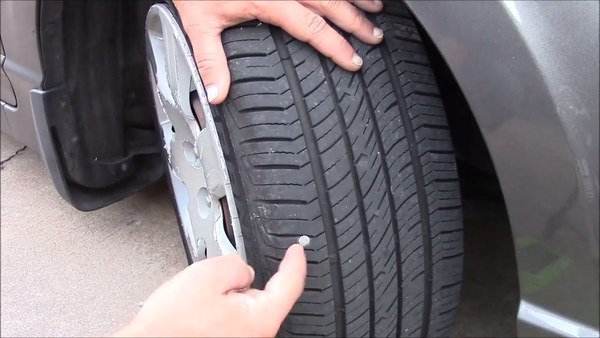
But no oiliness in the condensate and on the pipes should appear - this may indicate that the system will soon fail. Moreover, the fact that the air conditioner stops cooling the interior is not the biggest problem, because if the compressor jams, the drive belt may break, and we already found out what this is fraught with in the previous section.
Other options
There are several other sources in the car that can leave traces of a leak. The most non-trivial option is a leaky shock absorber, although usually this failed suspension unit only “sweats” and does not flow so that it drips to the ground. Much more often it flows from the washer reservoir, its nozzles or connections on the tubes - these streaks are generally harmless, but also indicate that not everything is in order.
The only exception is leaking headlight washers if they have just worked. In cars equipped with a headlight hydraulic corrector, fluid leaks from the hydraulic drive are possible, but often the slave cylinders “leak” directly into the headlight. Well, we will finish with water from the exhaust pipe - this is a normal phenomenon, since it is ordinary condensate.
Well, we will finish with water from the exhaust pipe - this is a normal phenomenon, since it is ordinary condensate.
practice popular questions
Articles / Popular questions Changes to the traffic rules for electric scooters of October 6, 2022: what has changed and when does it come into force Recently, we talked about what requirements are in the current traffic rules for those who ride electric scooters, and noted the imperfection of the legislation. After all, the drivers of most powerful e... 382 one one 10/12/2022
Articles / Used cars 5 reasons to buy and not to buy Toyota Fortuner II “Impeccable car”, “phenomenal cross-country ability”, “shaky suspension, hard steering, the engine inside bellows like a buffalo”, “huge miscalculations in terms of comfort”, “comfortable handsome man”, “very . .. 3956 2 one 09.10.2022
.. 3956 2 one 09.10.2022
Articles / Practice Look into the kingpin: what is a kingpin suspension, how to maintain it and why to inject The word "pivot" today seems to someone as archaic as "zipun", "endova" and "batog". In fact, this is not so: the king pins have not left us yet, and it is likely that some will have to ... 1496 7 0 07.10.2022
Test drives / Test drive Haval Dargo vs Mitsubishi Outlander: the dog is barking, the stranger is coming In the Haval dealership in the south of Moscow, life is in full swing: buyers look at cars, communicate with managers and sign some papers. While I was waiting for the test Dargo, the same cross... 13136 7 170 13.09.2022
While I was waiting for the test Dargo, the same cross... 13136 7 170 13.09.2022
Test drives / Test drive Motor from Mercedes, emblem from Renault, assembly from Dacia: test drive of the European Logan 1.0 It would seem that what's new can be told about the second generation Renault Logan, known to every Russian taxi driver, as they say, up and down? However, this car has... 11464 ten 41 08/13/2022
Test drives / Test drive Geely Coolray vs Haval Jolion: Free Cheese? If! Do you want to buy a car today with a full warranty, on credit at an adequate rate, without wild dealer markups? Now this is still a task, because a full-fledged chain of "representation - s.